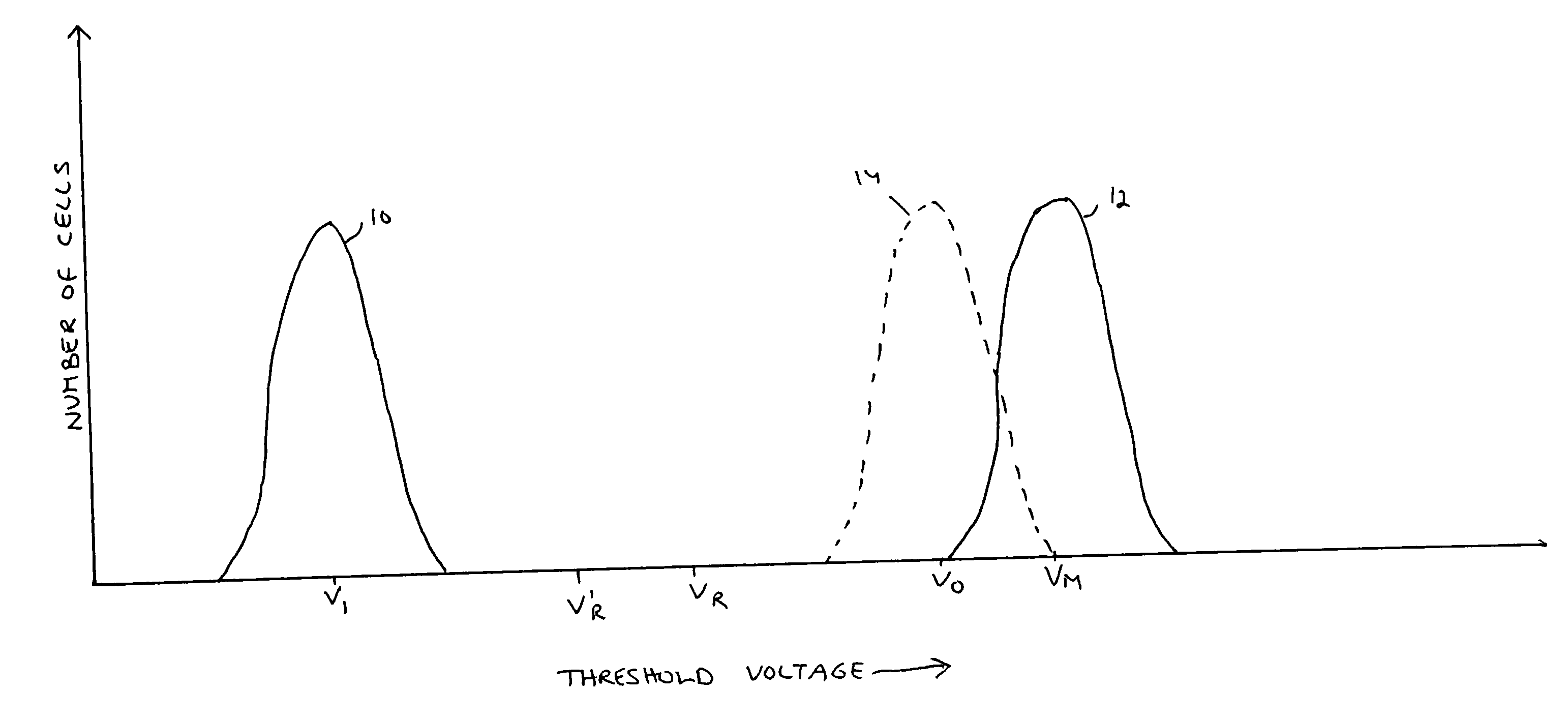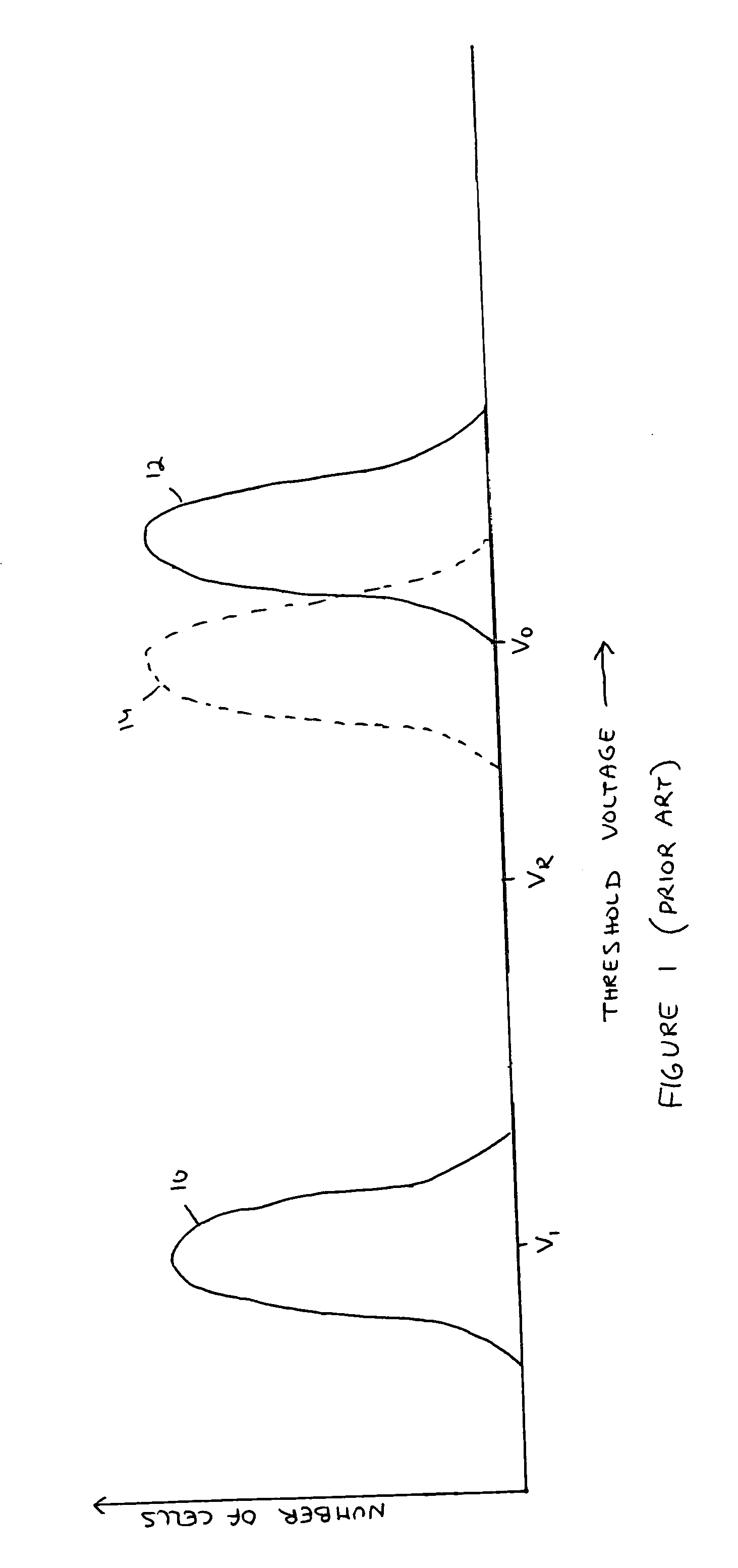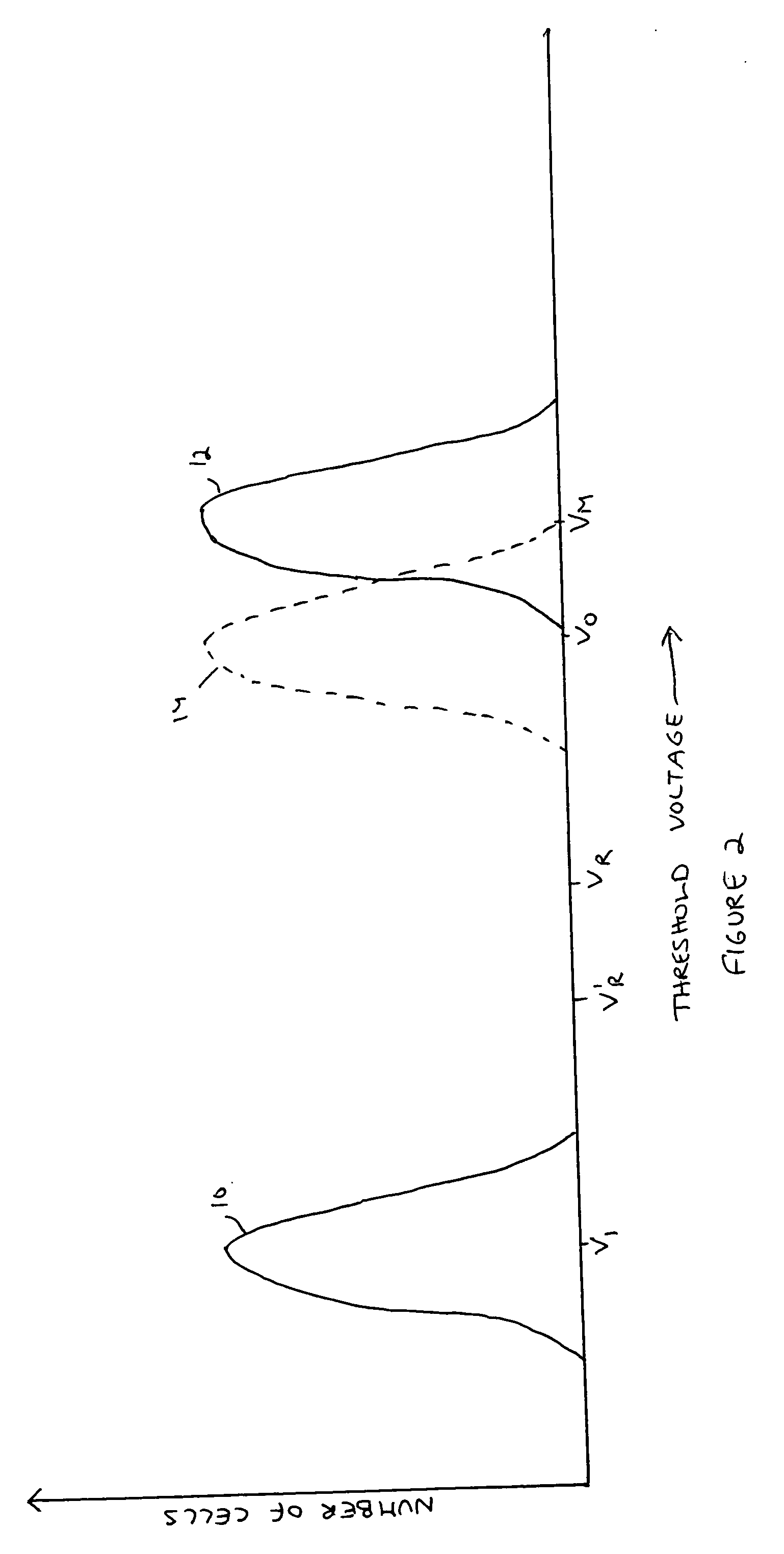Drift compensation in a flash memory
a flash memory and drift compensation technology, applied in the field of nonvolatile memory management, can solve the problems of inability to guarantee the reliability of error correction procedures, limited block size of flash cells,
- Summary
- Abstract
- Description
- Claims
- Application Information
AI Technical Summary
Benefits of technology
Problems solved by technology
Method used
Image
Examples
example 1
A Model that Depends on the Number of P / E Cycles but not on the Data Retention Time
[0041] This model is linear in the number of P / E cycles. For a block of a MLC flash memory device, the model is
Estimated—drift=P / E—coefficient*Band—number—coefficient*P / E—count+P / E—initial—offset.
where P / E_coefficient is an empirically determined coefficient that applies to all the threshold voltage bands of the MLCs, Band_number_coefficient is an empirically determined coefficient that applies to a particular threshold voltage band (higher voltage bands are expected to drift more over time than lower voltage bands), P / E_count is the number of P / E cycles that the block has endured, P / E_initial offset is an empirically determined constant offset and Estimated drift is the amount by which the lower end of the band's threshold voltage distribution is estimated to drift downward. For example, if P / E_coefficient has been determined empirically to be 1.6×10−5V / cycle, if Band_number_coefficient for a par...
example 2
A Model that Depends on Data Retention Time but not on the Number of P / E Cycles
[0043] The model is linear in the data retention time. For a page of a MLC NAND flash memory device, the model is
Estimated—drift=Data—retention—coefficient*Band—number coefficient*Time—since—programmed+Data—retention—initial—offset.
where Data_retention_coefficient is an empirically determined coefficient that applies to all the threshold voltage bands of the MLCs, Band_number_coefficient is an empirically determined coefficient that applies to a particular threshold voltage band, Time_since_programmed is the time that has elapsed since the page was programmed, Data_retention_initial_offset is an empirically determined constant offset and Estimated_drift is the amount by which the lower end of the band's threshold voltage distribution is estimated to drift downward. For example, if Data_retention_coefficient has been determined empirically to be 0.08V / yr, if Band_number_coefficient for a particular ban...
PUM
 Login to View More
Login to View More Abstract
Description
Claims
Application Information
 Login to View More
Login to View More - R&D
- Intellectual Property
- Life Sciences
- Materials
- Tech Scout
- Unparalleled Data Quality
- Higher Quality Content
- 60% Fewer Hallucinations
Browse by: Latest US Patents, China's latest patents, Technical Efficacy Thesaurus, Application Domain, Technology Topic, Popular Technical Reports.
© 2025 PatSnap. All rights reserved.Legal|Privacy policy|Modern Slavery Act Transparency Statement|Sitemap|About US| Contact US: help@patsnap.com



